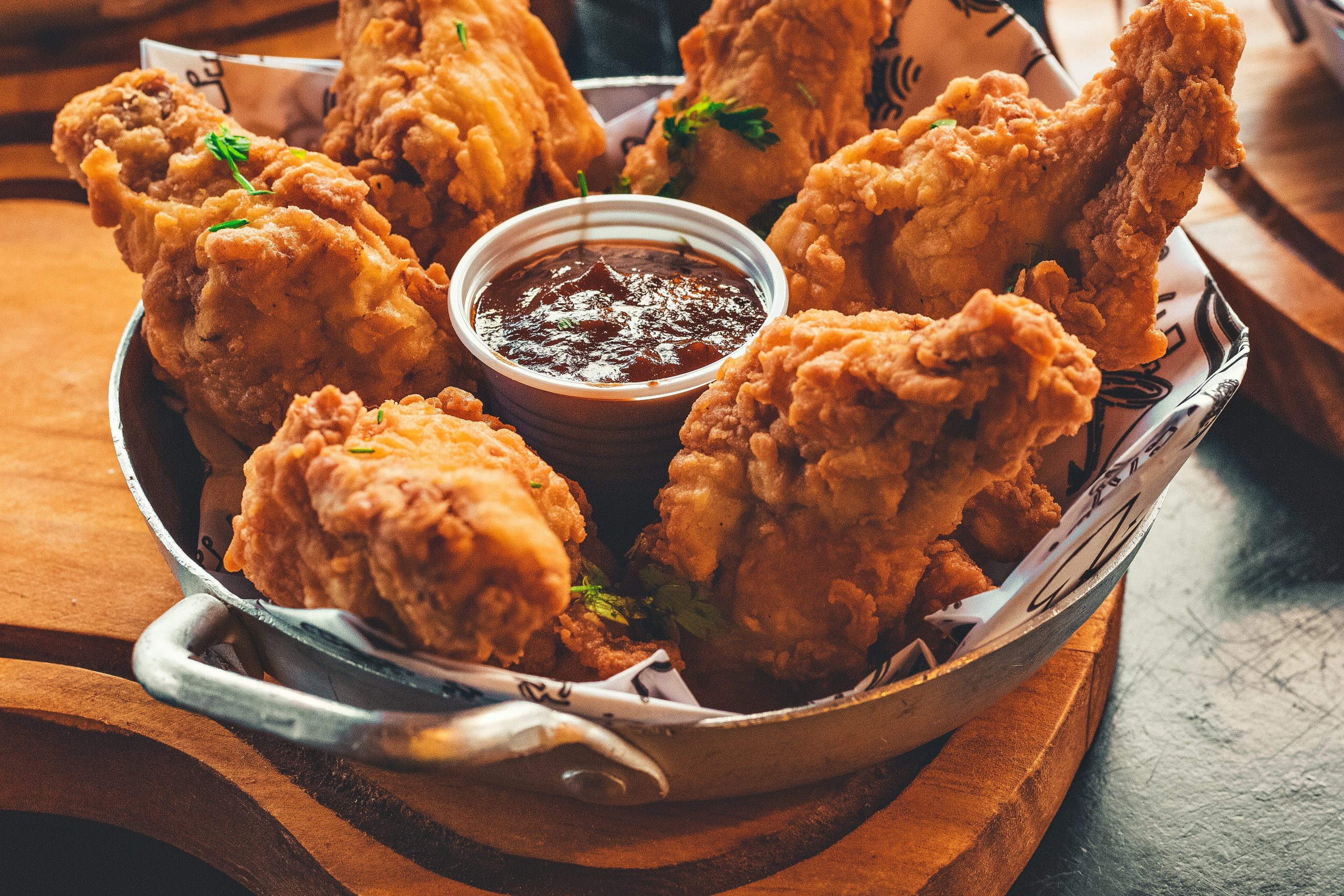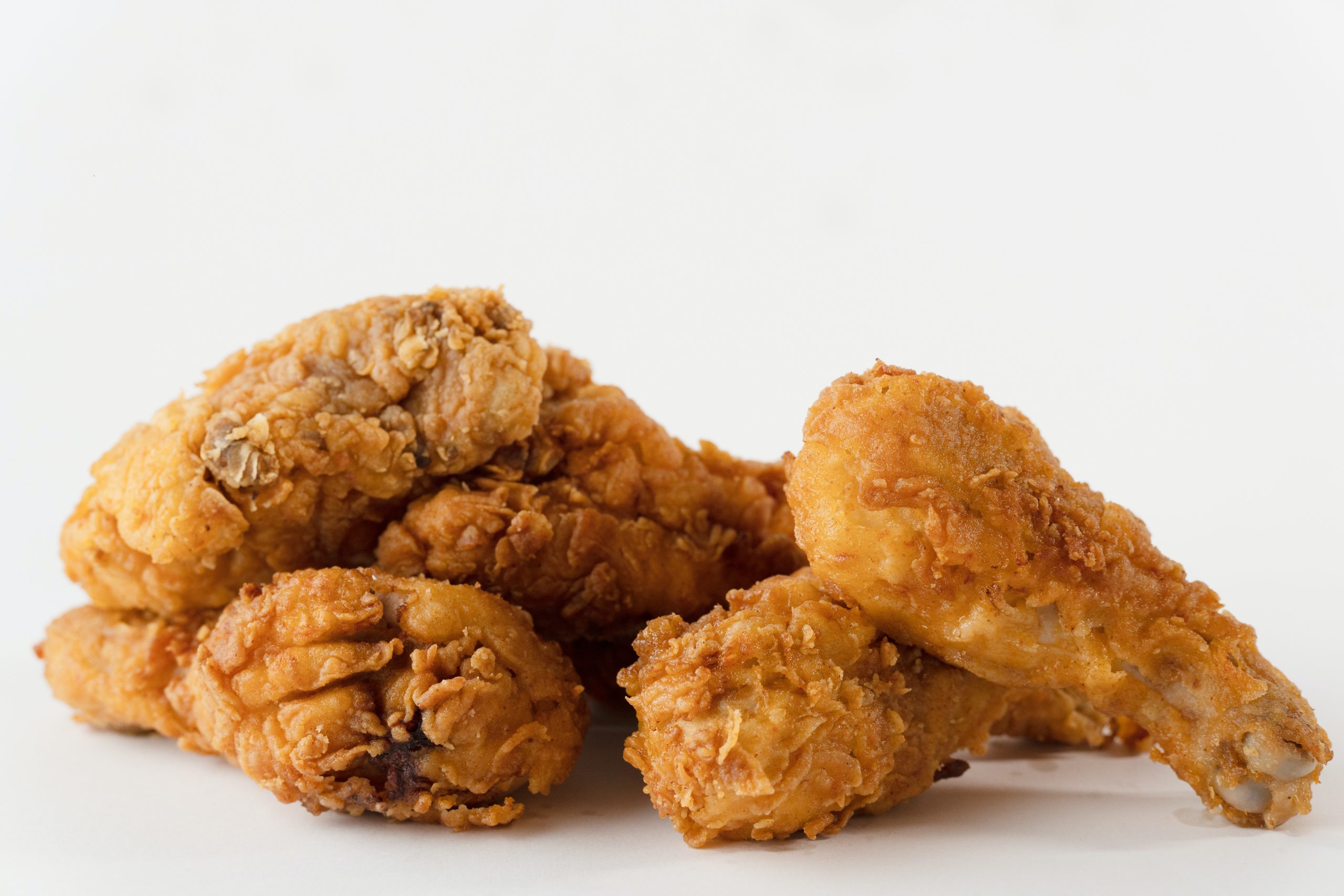If you’re wondering how to fry and make crispy fried chicken, this article will walk you through the steps. Traditionally, people used shortening or lard to fry chicken. Others use oil. You should make sure you use oil with a high smoke point, which means that it can withstand a high temperature without burning. Olive oil and butter tend to have low smoke points, so you should use vegetable oil. Depending on the amount of chicken you’re frying, you can either deep-fry the pieces or shallow-fry them. Regardless of the type of oil you choose, you should ensure that the fat on the pieces rises halfway up the chicken.
The next step is to get the oil to the correct temperature. It would help keep the temperature low to prevent the pieces from burning. The ideal temperature is 350 deg F, and be sure to bring the oil to this temperature between batches of frying. Otherwise, the chicken will burn before it’s cooked and end up being greasy. To ensure the best results, you can use a thermometer to monitor the temperature.
What Produces The Crispy Texture Of Fried Chicken?
One of our recommended ingredients for the crispiest fried chicken is cornstarch. Cornstarch is frequently utilized in Asian fried chicken recipes, and the flour and cornstarch mix offers the crispiest results. The ideal fried chicken should be a kaleidoscope of taste and texture. The exterior has a crispy and crunchy texture, and the breading contains precisely the proper amount of fat and is seasoned with salt and spices. The interior should be juicy and well-seasoned.
Why Isn’t The Crust On My Fried Chicken Crispy?
The temperature is either too hot or too cold. On the other hand, the chicken will take too long to fry if the heat is too low, becoming dense, oily, and leaden. The skin will not be crispy, and the meal will not be memorable. Arrange them on a cooling rack over a baking sheet to cool. If you’re frying numerous batches, place the entire arrangement in a low oven to keep it warm while you continue to cook and add to the rack.
How to Fry Chicken & Make Crispy Fried Chicken
You’ll need to soak the chicken in before cooking it, and after that, you dredge it in flour and shake it off. Frying chicken is a quick and easy way to prepare chicken that may be done in two ways: pan-frying or deep-fat frying. Both methods rely on heated oil to cook the chicken, resulting in crispy chicken on the surface and juicy and tasty on the inside. A small layer of flour, crumbs, or batter is usually applied to the chicken. Instead of cooking a whole chicken, chicken parts are commonly used.
Once the oil is hot, you can start frying your chicken. Place the chicken skin side down in the hot oil. Don’t crowd the pan, as this will ensure even cooking. After a few minutes, turn the pieces over so they’re evenly cooked. Transfer them to a paper towel to absorb the excess grease when they’re done. This method can make the chicken moist and crunchy. Crispy fried chicken is ready to be served when you are.
Selecting the right oil is crucial when deep-frying chicken. To avoid having the chicken fall apart while frying, place the chicken skin-side down in the hot oil. If you’re frying a large amount of food, you should also ensure that the oil temperature is hot enough to cook the meat. If you’re frying a whole chicken, be sure to cook it in batches so that it will cook properly and stay crispy.
Fried Chicken Recipe
Crispy Fried Chicken In 6 Easy Steps
Frying chicken is a weekend culinary job, which means it will take you a couple of hours to complete. Still, once you’ve mastered the method, you can fry multiple batches at once for family picnics or have cold leftovers to enjoy on the spur of the moment. Here are the six most important things to remember while frying this crispy, juicy chicken at home.
The next step in frying chicken is to decide on the type of oil to use. Many people prefer lard or shortening for this purpose. This type of oil has a high smoke point, and it can be heated to a high temperature without burning.
1. Buy chicken pieces
A drumstick is something that everyone wants. By buying only the bits you like best, you can avoid fights about the two you’ll get from buying a whole chicken and chopping it down yourself. Because of the extended cook time, I skip the breasts and go straight for a 50/50 split of drumsticks and thighs.
2. Dry Brine The Chicken For Juiciness
First, dry brine (that is, salt) the chicken. You can leave the chicken in the fridge overnight or for only 30 minutes before coating and frying it at room temperature. This salting step is crucial for moist, delicious chicken because it exposes it directly to salt. This tenderizes it while also infusing it with taste.
3. Make A Strong Spice Mixture
I found the original recipe to be too salty and overpowering, so I’ve included a lighter seasoning combination below. While the chicken is being salted, mix together the spices and rub half of them into the meat before coating it in flour. Don’t forget that the spices may lose some of their flavour in the frying oil, and some may fall off during the coating process.
4. Use Egg Whites, Alcohol, And Cornstarch For Crispy Coating.
The inclusion of egg whites is a tip I picked up from my favorite tempura recipe. My buddy Erika taught me to use cornstarch in my flour for frying, and Alton Brown taught me to add bourbon to my buttermilk and egg mixture, but I’m more likely to use vodka. These seemingly unrelated ingredients combine to create a super-crispy chicken coating with ripples, nooks, and flakes – all the things we love about fried chicken. Here’s how each one contributes to the batter.
- The protein in egg white lends structure to the dish, and it also acts as a culinary adhesive, allowing the flour coating to adhere to the chicken. Because of the fat content of the yolks, you’ll get a softer crust if you use entire eggs.
- In the frying oil, the alcohol evaporates quickly, which hardens the covering, resulting in flaky layers. This component is frequently used in pie crust recipes as well.
- The flour contains cornstarch, which makes the crust crispier. Cornstarch breaks down the protein in all-purpose flour just enough to soften the coating.
5. Fry In A Dutch Oven
Although a cast iron skillet is the traditional Southern frying pan, its shallow depth makes a mess (and can be a fire hazard if not used properly) when frying. Instead of frying, use a Dutch oven. The high sides help keep splatter to a minimum, and the heaviness helps keep the oil temperature consistent as chicken pieces move in and out.
6. Make Use Of Two Thermometers
For the oil, use a deep-fry or candy thermometer, and for the chicken’s internal temperature, use a probe thermometer. The oil temperature will drop as the chicken parts are added to the saucepan. As you fry, you’ll need to watch the temperature by changing the heat.
To make your chicken crispy and delicious, the first step is to choose an appropriate oil temperature. The oil should be 350 to 365degF, and it should be kept at this temperature throughout the cooking process. Besides, the chicken should be dredged before the frying process. If it’s too wet, it won’t receive an even coating of flour. That’s a great way to get a juicy, moist chicken.
The probe thermometer will ensure that your chicken is juicy and cooked to perfection. Because the spice combination browns quickly before the chicken is cooked, you can’t rely on the golden-brown coating to gauge doneness. The chicken should attain an internal temperature of 165°F in the thickest portion of each piece; for the most accurate reading, make sure the thermometer is not contacting bone when taking the temperature.
How Can I Improve The Quality Of My Chicken Crust?
To produce a good crust, start with high heat, whether you’re roasting it in the oven or frying it in a skillet on the stove. Heat some oil in a skillet till it’s practically smoking, then sear your chicken skin-side down until it’s nice and crisp. The ideal temperature for frying chicken is around 350 degrees. However, chicken straight from the refrigerator can lower that temperature sweet spot. As a result, the batter absorbs more oil, resulting in a soggy piece of chicken when you remove it from the fryer.
Conclusion
While the oil temperature of the chicken should be kept consistent, you should carefully watch the temperature when frying. You can reduce the heat in a skillet to make the chicken crispy. When it comes to cooking chicken, you should keep it as moist as possible. The better the oil is, the better. Then, you can place the chicken pieces in the pan. The chicken is now ready to be served. If you have never tried it before, you may want to skip the steps described above.

